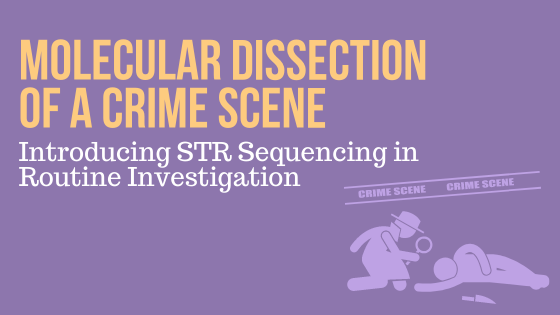I currently work as a post-doctoral researcher at the Institute of Legal Medicine, Ludwig Maximilian University of Munich (LMU). My ongoing research concerns the application of NGS in the routine forensic work.
Written by: Marta Diepenbroek, Institute of Legal Medicine
I started to work in forensics in 2012 and I was very excited to observe how Next Generation Sequencing is taking first steps entering the forensic world. Seeing more and more of its potential, I decided to explore NGS as my next professional phase. When I learned about a new position opening at LMU, which was focused on introducing NGS in the routine casework, I applied for it immediately.
In my lab we analyze up to 20,000 DNA traces per year and most of them are mixtures, sometimes very complex. Knowing that using NGS could be a great help with getting better mixture resolution, I was looking forward to explore its real possibilities and to face challenges brought by all the genomic data I would obtain. After almost a year of sequencing STRs I am really excited about the future of this methodology and I am even more interested in forensic genomics!
The past few months I spent focusing on STR sequencing and evaluating the use of Precision ID GlobalFiler™ NGS STR Panel v2 and Converge™ Software v2.1 in the analysis of caseworks. In order to do so, I sequenced over 100 various samples corresponding with those being routinely investigated in our lab. For each case analyzed, I have chosen traces corresponding with reference samples (suspects and/or victims) and also DNA mixtures from the scene. The selected caseworks ranged from 31pg to 1ng input, had various biological origin and were single source or 2-, 3-, 4-person mixtures with different contributor ratios. The obtained results were compared with CE and analyzed in order to evaluate if NGS brought some additional information in the investigation.
I was happy to use Converge™ for data analysis because it served me as a user-friendly tool which brought together current and future ways of seeing STR markers. It allowed not only to analyze sequencing results but also to compare and combine them with the CE data and to get more insights when needed. The obtained results were concordant with CE and including sequencing data shed more light on many cases, especially some special ones, where the contributors were closely related. Based on that, we plan to continue the validation and in the future to introduce STR sequencing as a routine tool used in our lab.
In the past few years, due to a significant number of validation studies, NGS has proven its potential to change our gold standards of STR analysis. Some of the issues still stopping NGS from becoming a standard tool among the forensic community will most likely solve themselves with time (e.g. nomenclature standards or national databases) but others can be resolved only with learning-by-doing. And for this to happen more laboratories have to decide on introducing NGS into their routine work and its impact on crime scene investigation should be presented to a broader range of the most crucial partners: the law enforcement.
I believe that progress is an integral part of science, and therefore it is no surprise that also forensics is currently undergoing a change. With NGS, we are able to perform a molecular dissection of DNA in order to shed more light onto a criminal investigation. However, the new insights brought by forensic genomics, bring new challenges concerning the data analysis and interpretation. I believe that studies like the ones I have done are very useful for even more understanding and further development of the technology so that the whole community can take a final step into a new, exciting world of forensic genomics.
The next step is definitely preparing a paper which summarizes our results! I hope to continue to work more with STR sequencing and in the meantime I am very excited to start a new study which concerns SNPs.
WOULD YOU LIKE TO SEE MORE ARTICLES LIKE THIS? SUBSCRIBE TO THE ISHI BLOG BELOW!
SUBSCRIBE NOW!


